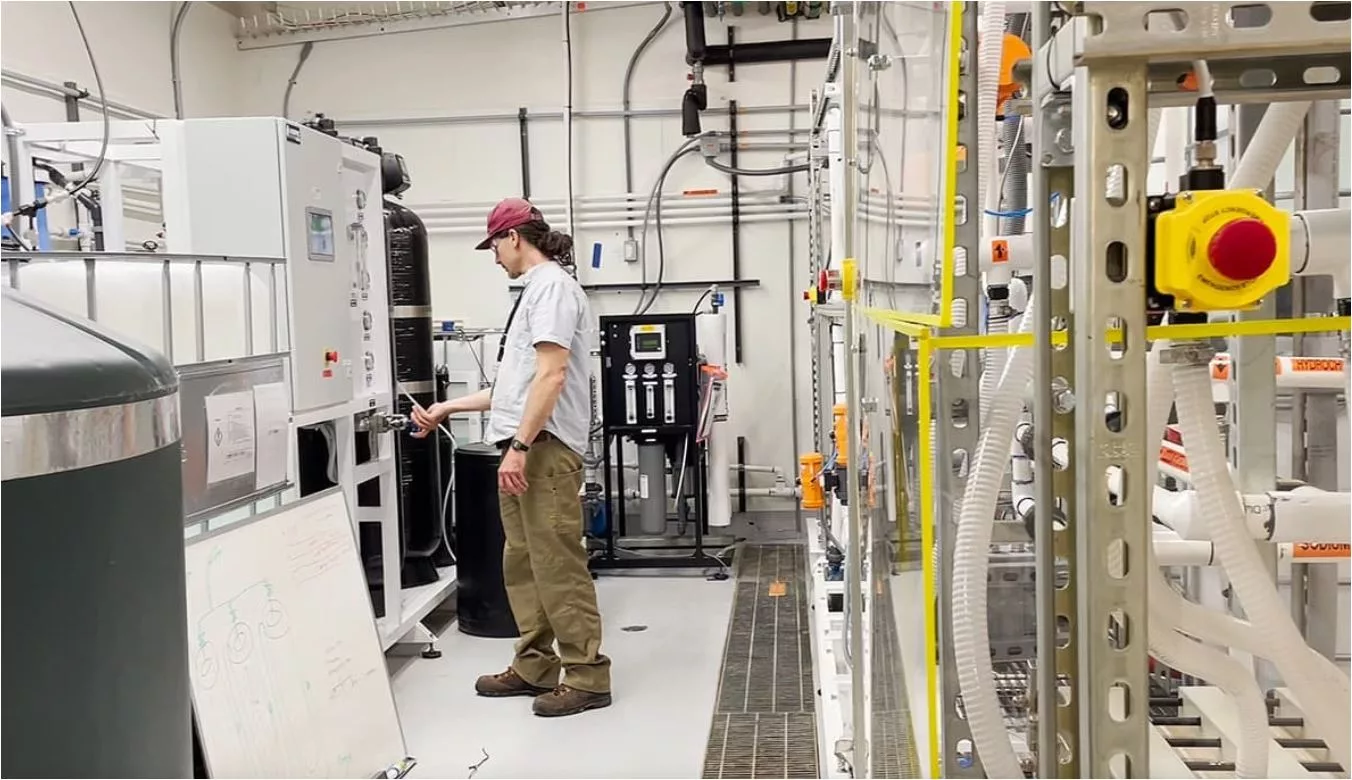
By Pepper Fisher
PORT ANGELES – A pioneering technology that removes carbon dioxide from seawater is planned for the Port of Port Angeles for a two-year pilot program.
Ebb Carbon has been operating a 100 ton per year ocean carbon dioxide removal (CDR) system at the marine labs at the U.S. Department of Energy’s Pacific Northwest National Laboratory (PNNL) in Sequim Bay since last year.
Ebb Carbon’s Kyla Westphal explained to us why developing this technology is important.
“You know, a lot of folks these days think that technologies like solar panels, wind power, or even EV’s are the solution to climate change. But there is scientific consensus these days that there is too much carbon dioxide in the air right now. And so, even if everyone on this planet weren’t to drive another mile, right? Even if we were to stop emitting today, we would still suffer the impacts of climate change. The ocean has been absorbing carbon dioxide for millennia, and our technology and our approach is just intended to work with the earth’s natural systems so that we can draw down those billions of tons of excess CO2 that we need to.”
Ebb Carbon is now ready to expand to a broader study of their new process, and they’re doing it here in Port Angeles Harbor. If they clear the permit approval process, the new facility will draw in seawater, pass it through a series of filters which remove the acid, and reintroduce the water into a small area of the harbor. Studying its potential impacts on marine life, such as oysters and eel grass, is a big part of the program.
“We’ve worked with Department of Ecology and we’ve hired experts to really help us create these models to understand potential effects in the water. And what they tell us is that any potential effects, the footprint is small, and any potential effects are temporary and limited in time. Again, this is a pilot, and it’s really as much about learning along the way as it is about the carbon dioxide removal itself. Both are very important pieces of what we would consider success in this.”
Westphal says the facility is designed to remove up to 500 tons of carbon dioxide per year from the ocean, and de-acidify up to 70 million gallons of seawater over the 2 year program. She admits it’s just a relative drop in a vast ocean of water. We asked her how Ebb plans to proliferate this technology to a scale large enough to make a difference on a global scale.
“When we think about, “How are we going to reach the scale we need to really make an impact on climate change and and draw down, you know, billions of tons of CO2?”, a lot of our thinking turns to, “Well, where is there existing infrastructure that we can work with to basically make this process faster?” So, one of the things we are looking really closely at is industries like the desalination industry, that already process seawater, that we could potentially co-locate with, and do that more expediently, so that we can draw down carbon dioxide faster.”
Westphal says if all goes well with the permit approval process, Ebb Carbon could have its new facility operating as early as this fall.
To learn more about how Ebb’s technology works, click here.
(Photo: A view of the Ebb system from within PNNL’s lab, courtesy of Ebb Carbon)
